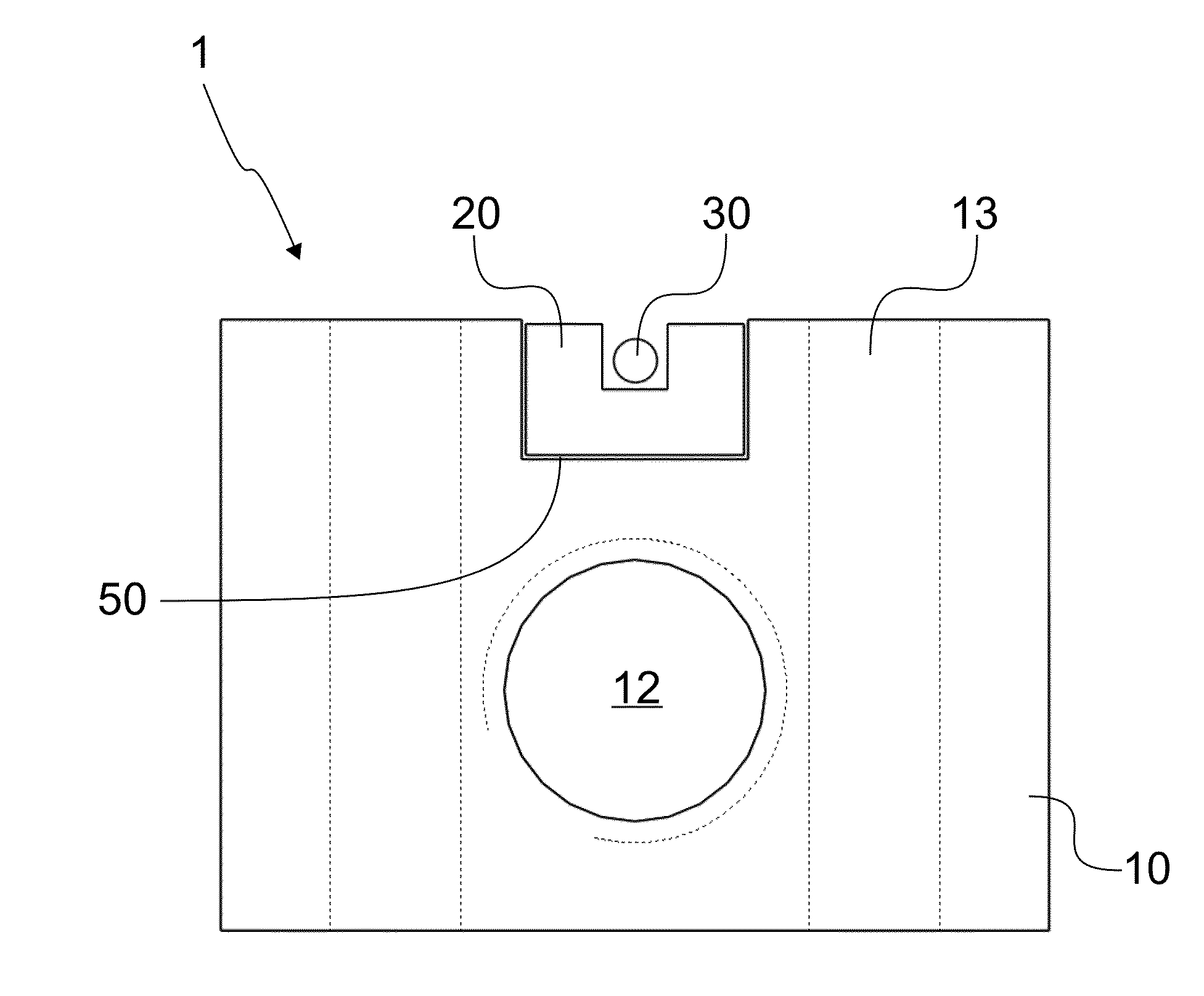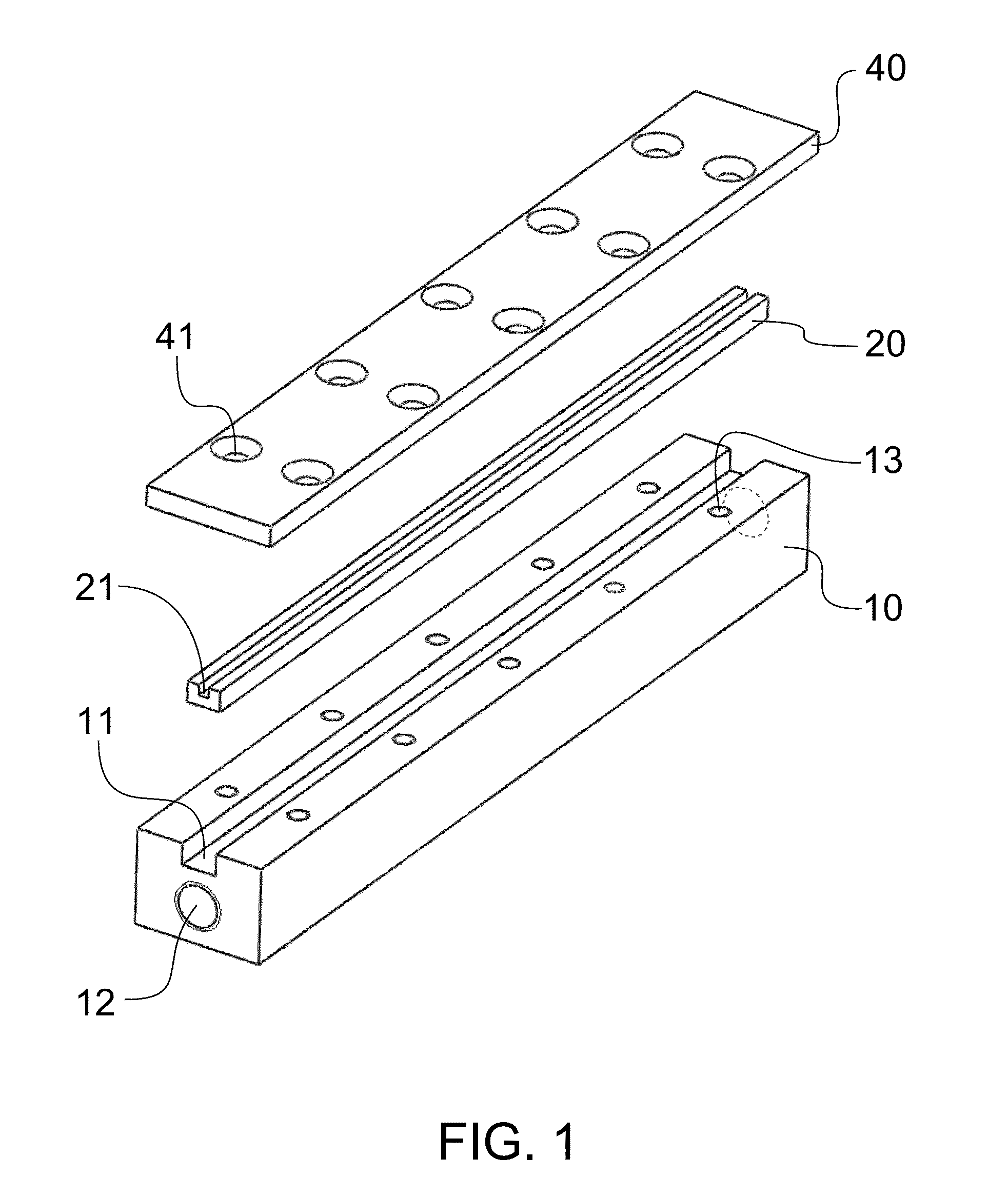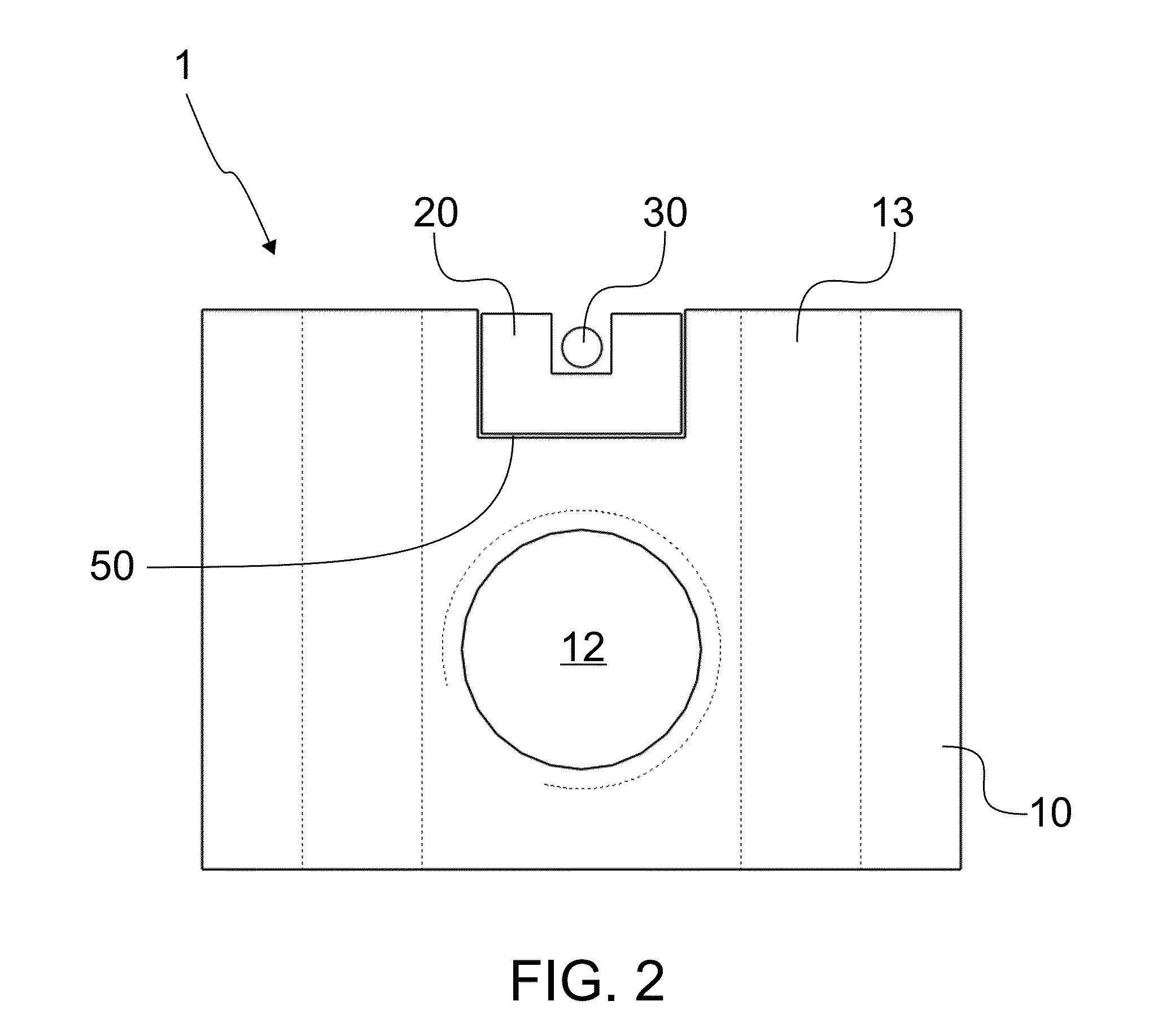Packaging for a fiber optic component and manufacturing method thereof
a technology of fiber optic components and packaging, which is applied in the field of packaging can solve the problems of high optical radiation fluencies high optical power levels may also leak out of fiber optic components, and the heating of packages, so as to minimize the transfer of thermal expansion induced strain, reduce the temperature increase of the package, and reduce the effect of thermal expansion
- Summary
- Abstract
- Description
- Claims
- Application Information
AI Technical Summary
Benefits of technology
Problems solved by technology
Method used
Image
Examples
Embodiment Construction
[0019]As can be seen in FIGS. 1 and 2, the fiber optic component packaging 1 according to the invention comprises a first support member 10 having a first coefficient of thermal expansion k1. The packaging also comprises a second support member 20 having a second coefficient of thermal expansion k2. A fiber optic component 30, such as an optical fiber, is mounted to a longitudinal groove 21 of the second support member 20 and preferably attached thereto by means of adhesive applied to both ends of the groove 21. In other words, the second support member 20 acts as a sub-mount for the fiber optic component 30. The second support member 20 is further mounted to a corresponding longitudinal and rectangular groove 11 of the first support member 10.
[0020]The attachment of the second support member 20 to the first support member 10 is done resiliently in order to minimize the transfer of thermal expansion induced strain of the first support member 10 to the second support member 20. The r...
PUM
| Property | Measurement | Unit |
|---|---|---|
| Flexibility | aaaaa | aaaaa |
| Area | aaaaa | aaaaa |
| Wavelength | aaaaa | aaaaa |
Abstract
Description
Claims
Application Information
 Login to View More
Login to View More - R&D
- Intellectual Property
- Life Sciences
- Materials
- Tech Scout
- Unparalleled Data Quality
- Higher Quality Content
- 60% Fewer Hallucinations
Browse by: Latest US Patents, China's latest patents, Technical Efficacy Thesaurus, Application Domain, Technology Topic, Popular Technical Reports.
© 2025 PatSnap. All rights reserved.Legal|Privacy policy|Modern Slavery Act Transparency Statement|Sitemap|About US| Contact US: help@patsnap.com



